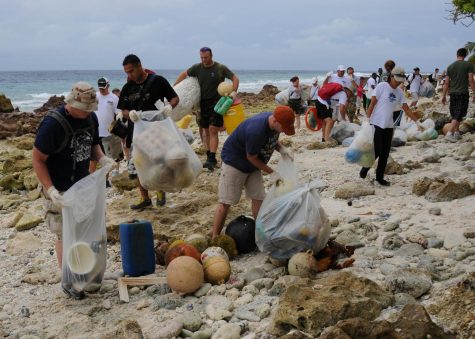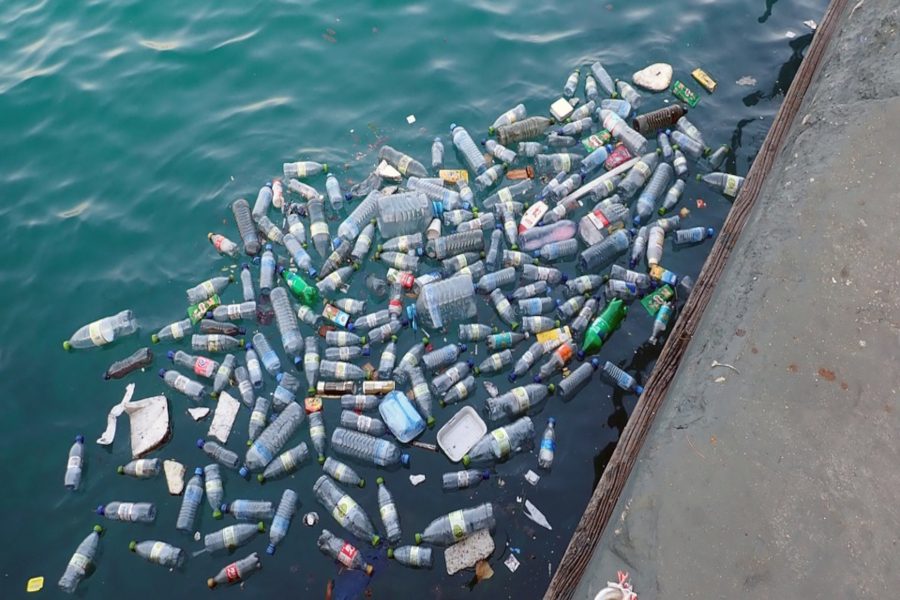Humans need to stop trashing Earth
IMAGE / Courtesy of pixabay
Plastic bottles and other trash collected in bodies of water shows the impact of garbage on the environment.
Trash is something we all deal with, but how often do you recycle the waste you consume?
Our waste is going to places it doesn’t belong.
We are living in a dangerous time when we are killing our planet with our waste.
In the United States alone, there are 3,000 active landfills and over 10,000 old landfills that are filled with food waste, paper, yard trimmings, and plastic.
This puts our groundwater in danger.
This is because when landfills are filled to the brim with toxic materials, liquids from the weather or the trash seep through the dirt, causing water pollution.
The contaminated water is called leachate, which occurs when a substance that entered the landfill as a solid breaks down into a liquid.
This is produced when the waste becomes filled with water.
This problem will only get worse as the years go on.
But the problem is more than just landfills.
Waste products affect 90 percent of the world.
We have an epidemic with garbage getting into our oceans, which hurts sea life like fish and coral. They will be in danger as they are put into a situation where they have to adapt to living in the trash.
An article by SEE Turtles tells us about those dangers, saying that sea life, including turtles, whales, and other mammals, die from pollution or eating something they shouldn’t have.
Entanglement in waste products is just as much of a problem.
One of the many things that end up in our oceans is plastic, including grocery bags.
People tend to throw these bags away, and they sometimes end up in our water systems.
These bags are being mistaken as jellyfish to sea turtles and are being eaten, resulting in the decline of sea turtles in our oceans.
This problem hurts the Earth more than we think it does.
Trash “islands” exist in many oceans.

Members and residents of the Diego Garcia atoll, a British Indian Ocean territory, clean up trash at Barton Point. They collected more than 4,100 pounds of trash that day.
The North Pacific Gyre is home to the “Great Pacific Garbage Patch,” which is estimated to be twice the size of Texas.
The trash is 20 feet deep and is only bound to get worse if we continue to live in a way that generates so much waste.
Small companies and countries like Sweden have found ways to deal with this.
Sweden has made its waste into something positive by burning trash to make energy.
According to HowStuffWorks, Sweden passed a law making it mandatory to recycle waste into correct bins.
Only 34.6 percent of Americans recycle.
Some small companies focus on solving this problem, including FinalStraw, an environmentally-friendly straw company
Its flexible metal straw makes drinking your soda easy and healthier for the Earth.
Instead of using plastic, you can use a metal or biodegradable straw to prevent plastics from reaching our oceans.
Just going to the grocery store and asking to use bags instead of the plastic will be doing your part.
But even with these solutions, it is still not enough.
We all need to have the motivation to pick up after ourselves, to go out and, at least, pick up the candy wrappers that blew into the yard.
If we all pick up at least one piece of trash, 7.5 billion pieces of trash would be removed from our environment.

Class: Junior
Hobbies: Reading, writing, and hanging out with friends and family.
Future Plans: After high school, I plan to attend community...







Rose Martine • Nov 26, 2019 at 2:10 am
Very interesting subject , appreciate it for putting up. “Wrinkles should merely indicate where smiles have been
Regards.”
rose martine